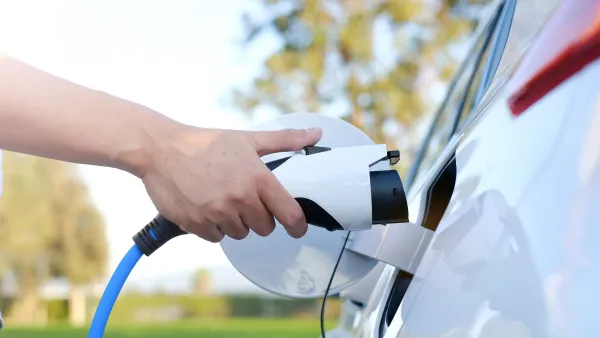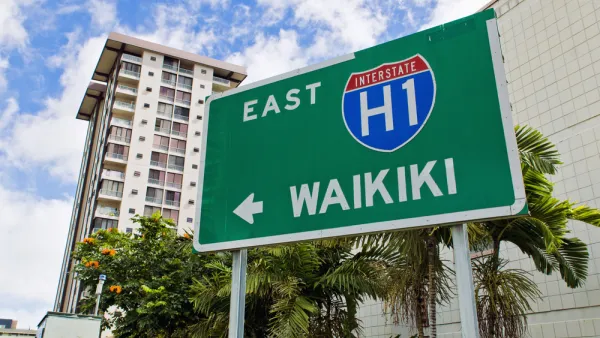EV sales are increasing–good news for the environment but bad news for road funding, as they pay no fuel taxes. Fortunately, the bipartisan infrastructure law has $125 million earmarked to "demonstrate a national motor vehicle per-mile user fee."

July 1 will mark the eighth anniversary of the nation's first ongoing mileage fee program, often referred to as a road usage charge. Sometime next month, Oklahoma will become the latest state to launch a 6-month demonstration program of charging motorists by the mile they drive rather than by the gallon of fuel they burn.
Despite much talk about this alternative user fee to motor vehicle fuel taxes to keep U.S. roads in good repair, progress has been painfully slow. To date, there are only three such revenue programs in existence in the U.S.: Oregon, Utah and Virginia, with Hawaii soon to join them, reports Julie Carr Smyth in the source article published June 24 in The Associated Press.
And soon, though we don't know when, the federal government will launch its own pilot program funded with $125 million designated in the Infrastructure Investment and Jobs Act (IIJA), aka bipartisan infrastructure law, signed into law by President Biden on November 15, 2021.
U.S. Department of Energy?
The first step in establishing the pilot will be the formation of a Federal System Funding Alternative Advisory Board, according to a webpage titled, "Federal System Alternative Funding Pilot" found in the Alternative Fuels Data Center (AFDC) division of the U.S. Department of Energy (DOE).
Planetizen has reported on projects funded by the $1.3 trillion IIJA administered by DOE, with the most recent being hydrogen hubs and carbon management. More recently, Planetizen reported on the announcement of the Federal Alternative Fuel Charging Grant program, part of a nationwide EV charging network, operated by the U.S. Department of Transportation's Federal Highway Administration (FHWA) that has its own IIJA webpage.
Late start
The AFDC description of the pilot program states, "DOT shall establish the Board by February 13, 2022, with Board findings relevant to implementing the Fee pilot program due to Congress one year later."
An email received June 28 from the FHWA's Public Affairs office indicated that they are indeed off to a late start:
FHWA statement on background from an FHWA spokesperson: FHWA is preparing a Federal Register Notice to seek nominations to the Federal System Funding Alternative Advisory Board. The federal advisory committee will provide input in establishing the parameters necessary to launch a voluntary pilot program to demonstrate a national motor vehicle per-mile user fee.
The late start is not entirely surprising as it is consistent with what some critics of the program have said. Eric Paul Dennis, a transportation analyst at the Citizens Research Council of Michigan, told Smyth of The AP, “There’s no program design that I have seen that I think can be implemented at scale in a way that is publicly acceptable."
Indeed, a review of Planetizen's extensive posts tagged 'road usage charge' reveals the slow progress of these programs, also referred to as mileage-based user fees, as well as criticism, although that was five years ago:
- Road Usage Charge at Least 10 Years Away, March 12, 2018
- An Argument Against VMT Fees as Replacements for Gas Taxes, February 6, 2018
- The Slow Transition from Gas Taxes to Mileage Fees, January 17, 2018
FULL STORY: As fuel taxes plummet, states weigh charging by the mile instead of the tank

National Parks Layoffs Will Cause Communities to Lose Billions
Thousands of essential park workers were laid off this week, just before the busy spring break season.

Retro-silient?: America’s First “Eco-burb,” The Woodlands Turns 50
A master-planned community north of Houston offers lessons on green infrastructure and resilient design, but falls short of its founder’s lofty affordability and walkability goals.

Delivering for America Plan Will Downgrade Mail Service in at Least 49.5 Percent of Zip Codes
Republican and Democrat lawmakers criticize the plan for its disproportionate negative impact on rural communities.

Test News Post 1
This is a summary

Test News Headline 46
Test for the image on the front page.

Balancing Bombs and Butterflies: How the National Guard Protects a Rare Species
The National Guard at Fort Indiantown Gap uses GIS technology and land management strategies to balance military training with conservation efforts, ensuring the survival of the rare eastern regal fritillary butterfly.
Urban Design for Planners 1: Software Tools
This six-course series explores essential urban design concepts using open source software and equips planners with the tools they need to participate fully in the urban design process.
Planning for Universal Design
Learn the tools for implementing Universal Design in planning regulations.
EMC Planning Group, Inc.
Planetizen
Planetizen
Mpact (formerly Rail~Volution)
Great Falls Development Authority, Inc.
HUDs Office of Policy Development and Research
NYU Wagner Graduate School of Public Service




























